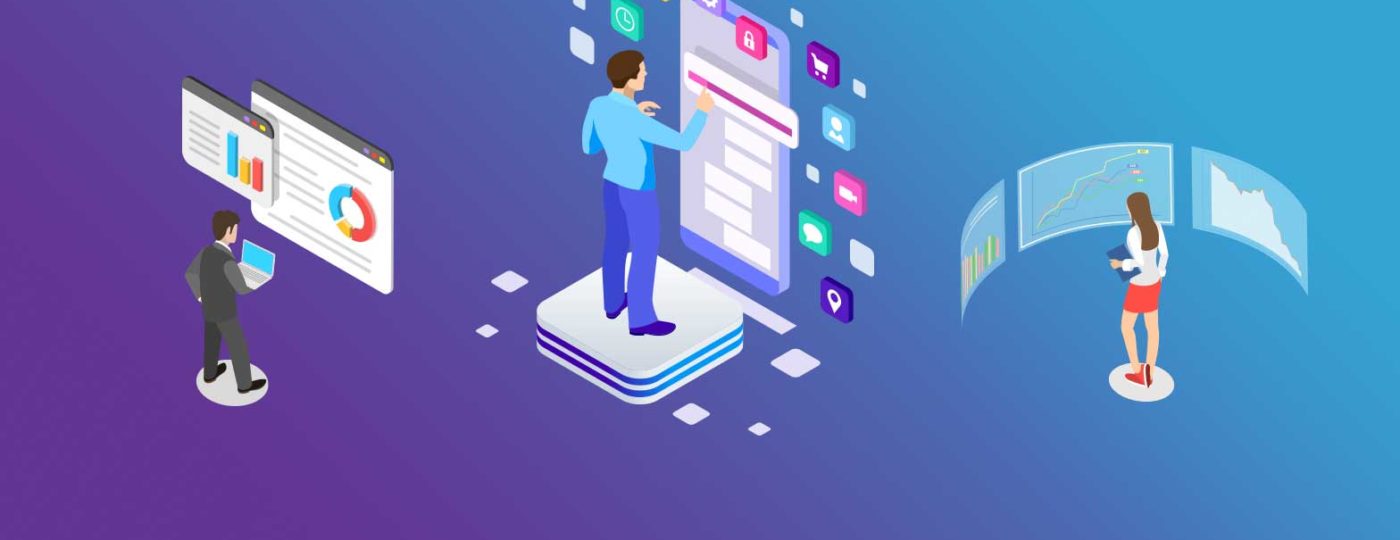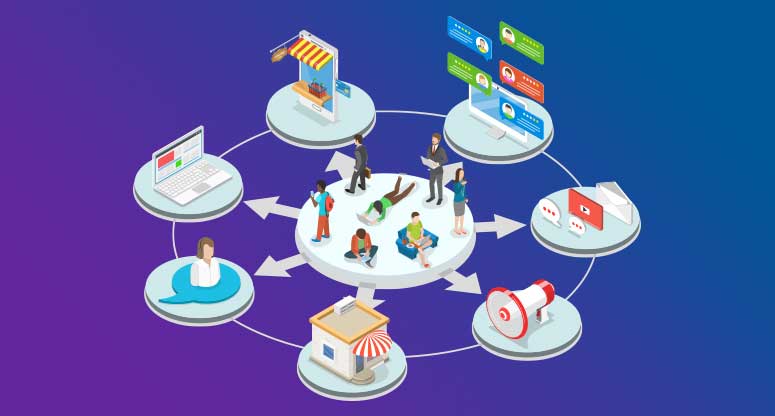Customer Experience10 Minute Read
What’s the Difference between Omnichannel and Multichannel Customer Care, and Why Does It Matter?
Creating a superior customer experience is no small challenge. With a dizzying variety of consumer technologies, customers are now interacting with businesses on dozens of communications channels. Engaging with them on each of these channels—and doing so in a seamless and efficient manner—is an essential goal. Yet, it’s also an overwhelming task. But why is it so essential? Making it as easy as possible for customers to reach you when and where they want not only boosts your sales potential, it also increases the general satisfaction with your brand. Yet it’s also overwhelming because it means adopting a successful omnichannel customer care strategy, no easy task in an era where technological platforms are numerous and quickly obsolete. Not all companies have the means to provide a truly omnichannel experience — or even have the necessary demand to do so. For some businesses, a multichannel experience is more appropriate. Let’s explore the differences between the two, and break down what approach is right for your brand.

What’s the Difference Between Omnichannel and Multichannel Customer Care?
Omnichannel and multichannel customer care are two different models for delivering customer service and support. Many differentiators exist between omnichannel and multichannel customer care, although the two concepts are often used interchangeably. The difference boils down to the level of integration each strategy provides. Let’s dive into the differences between omnichannel and multichannel customer care:
What is Multichannel Customer Care?
Multichannel customer care is the combination of a variety of communications channels into a single, unified strategy. This can include traditional models like phone lines and printed flyers, digital methods such as email marketing blasts and pay-per-click website marketing, and even the truly cutting-edge channels, including AI-powered chatbots and the latest social media channels.
Multichannel customer care focuses on providing customers with multiple channels to interact with a company, such as social media platforms, websites, phone lines, and physical locations. Multichannel customer care seeks to create an effective and convenient customer experience across multiple channels.
By expanding the range of customer service options available, businesses can eliminate frustrations usually found in traditional methods of contacting customer service, like long wait times and inefficient problem resolution. Since customers do not have to rely solely on conveyor belt-style support, They can fully engage with their favorite brands through whichever channel they prefer. As a result, customers have more opportunities to voice their concerns while also ensuring that businesses are receiving the feedback they need to stay competitive in the marketplace.
Companies using this approach can use data gathered from different channels to analyze trends and improve the quality of their customer service. Additionally, multichannel customer care enables businesses to provide personalized experiences by getting to know customers better through their interactions.
What is Omnichannel Customer Care?
Omnichannel marketing takes multichannel marketing one step further. It involves not only combining an assortment of different channels and modern call center technologies, but actually integrating all these channels into one comprehensive strategy. Omnichannel customer care also integrates each channel into core operations, such as distribution, staffing and intra-company communications.
Omnichannel customer care goes one step further than multichannel customer care. It involves not only combining an assortment of different channels and modern call center technologies but actually integrating all these channels into one comprehensive strategy. Through this unified model, companies offer customers several contact options and make sure the same agent handles the same request regardless of channel or medium.
The goal of this modern approach to customer service is to ensure that all touchpoints are integrated into a single customer journey with a business as they switch between different channels in search of quick resolutions to their queries. Omnichannel customer care helps build loyal customers by offering them convenience and efficient support.
An omnichannel customer care strategy also integrates each channel into core operations, such as distribution, staffing, and intra-company communications.
“Omnichannel customer care integrates distribution, staffing, and intra-company communications.” Click To Tweet
In practice, it’s the integration of these processes that makes omnichannel customer care so revolutionary (and challenging for the uninitiated). As important as it is to have a regularly updated and proactively promoted website, for example, it’s absolutely essential that the website be integrated with the rest of a company’s operational processes.
What does that level of integration mean in practice, exactly? It means that customers using a company’s website not only have the capability to make purchases online, but they also have the ability to ask a chatbot whether the brick-and-mortar location of the business has a certain item in its current inventory.
This is an important feature for customers who like to “reverse showroom” major purchases before making a commitment, a trend that involves customers researching a product online before going into a brick-and-mortar location to get a hands-on experience before making their purchase. And this is a trend that’s picking up tremendous steam in retailing—and which is being leveraged to the advantage of savvy retailers. “Read more about reverse showrooming here.
Related: 5 Lessons Digital Retailers Can Learn from the In-Store Customer Experience
Another example of omnichannel customer care in action is when a sales rep who’s interacting with an in-store shopper has the power to readily access all of that customer’s previous online purchases. That rep should also be able to see — instantly, and easily — whether or not the customer is an active member of the rewards program, for instance, and be able to reference and potentially follow up on any past purchases.
In both of these examples, different types of delivery channels are being used to not only enhance the customer experience, but also to increase upsell opportunities. There’s also the added bonus of giving customers the satisfaction of dealing with a company that immediately understands their preferences and demonstrates a respect for their time.
Delivering a Comprehensive Experience with Omnichannel Customer Care
That, then, is the true advantage of the omnichannel experience, and its primary differentiating characteristic as compared to multichannel delivery: It offers a method to integrate all available communications channels within a seamless, comprehensive, and highly satisfying customer experience.
Think of it as customer convenience: By letting shoppers interact with your business at any time and in any way that they prefer, they have little incentive to jump ship to a competitor and more reason to become a repeat shopper. It also poses a significant advantage to sales staff, who are empowered to do their jobs more efficiently, as well as the underlying brand and reputation of a business.

If this sounds like a challenge to implement—well, it is! Omnichannel customer care requires maintaining a consistent voice and level of quality across all of a company’s communications channels, as well as constantly updating crucial data across a number of databases. The net result is a much more labor-intensive task than a simple, multichannel customer care strategy, with significant risks of failure.
“Brands that sell across multiple markets often risk displaying outdated product packaging or unpredictable customer service,” as Sandi Gonzales of the Forbes Communications Council writes. “Today, customers expect that no matter where they interact with a brand, they will get the same personality, personalization and customer experience.”
Today, customers expect that no matter where they interact with a brand, they will get the same personality, personalization and customer experience.
That said, the payoffs of implementing a successful omnichannel customer care strategy soundly outweigh the risks. For instance, ZDNet points to Best Buy’s adoption of an omnichannel marketing strategy—seen as a necessity to compete with Amazon’s growing retail dominance—as the driver behind its biggest increase in sales since 2005.
Omnichannel Vs. Multichannel Customer Care: Which Is Right for You?
How, then, to determine whether your business needs an omnichannel versus a multichannel customer care strategy? You can answer this question by figuring out where your customers are congregating. Where do they most often find you? Are they primarily online shoppers? Are they engaged in social media? Are they more likely to respond to an ad on TV than an email blast or a Google ad?
If you can’t confidently answer these questions, it may be time to call in the experts. Accurately identifying the shopping patterns of your customers isn’t quite as easy as it sounds—nor is it easy to effectively engage them once you do know where to best engage them. That’s one of the primary reasons that so many businesses are turning to outsourced providers to deliver their omnichannel customer care solutions.

After all, setting up an omnichannel strategy that really works is not simple. It requires a series of high-level tasks:
- Identifying those channels that your customer base is most likely to use.
- Joining channels where you lack a presence, and optimizing your presence on those channels where you already do have one.
- Integrating all of these channels all into a single, comprehensive whole experience.
- Training your team members in the use of each channel, including how and when to use each one in a given situation.
Effectively setting up this chain of events is not only challenging, but easy to botch — which can have disastrous results, potentially (and irreparably) tarnishing a company’s reputation in the eyes of the very customers to whom they’re trying to appeal.
How Can a BPO Help with Omnichannel and Multichannel Customer Service?
Customer service business process outsourcing providers such as Working Solutions can help businesses with omnichannel and multichannel customer service by providing them with the tools and insights needed to create a seamless and personalized experience for their customers. BPOs enable companies to have visibility into all customer interactions, track trends across multiple channels, quickly assess customer needs, automate responses, target specific segments of customers with tailored messages, analyze data to inform better decision-making, and more. By leveraging the power of a BPO, businesses can create optimal customer experiences that are tailored to each customer’s individual needs.
Which is all the more reason for enlisting the expertise of an on-demand customer care specialist like Working Solutions. Such a partnership gives you all of these benefits of an effective omnichannel strategy in one convenient package, eliminating the need to maintain your own call center, hire and manage high-quality agents, purchase and maintain hardware and software, among a variety of other challenges.
If you’re interested in learning more about how an on-demand partner can create the omnichannel customer care strategy you need to succeed, you’ve come to the right place.
Schedule your complimentary consultation with a Working Solutions customer care expert.
Talk to an Expert →
This Might Interest You...
This website uses cookies to personalize and improve your experience. Continue browsing our site if you agree to our Cookie Policy or feel free to Manage Cookies yourself.


